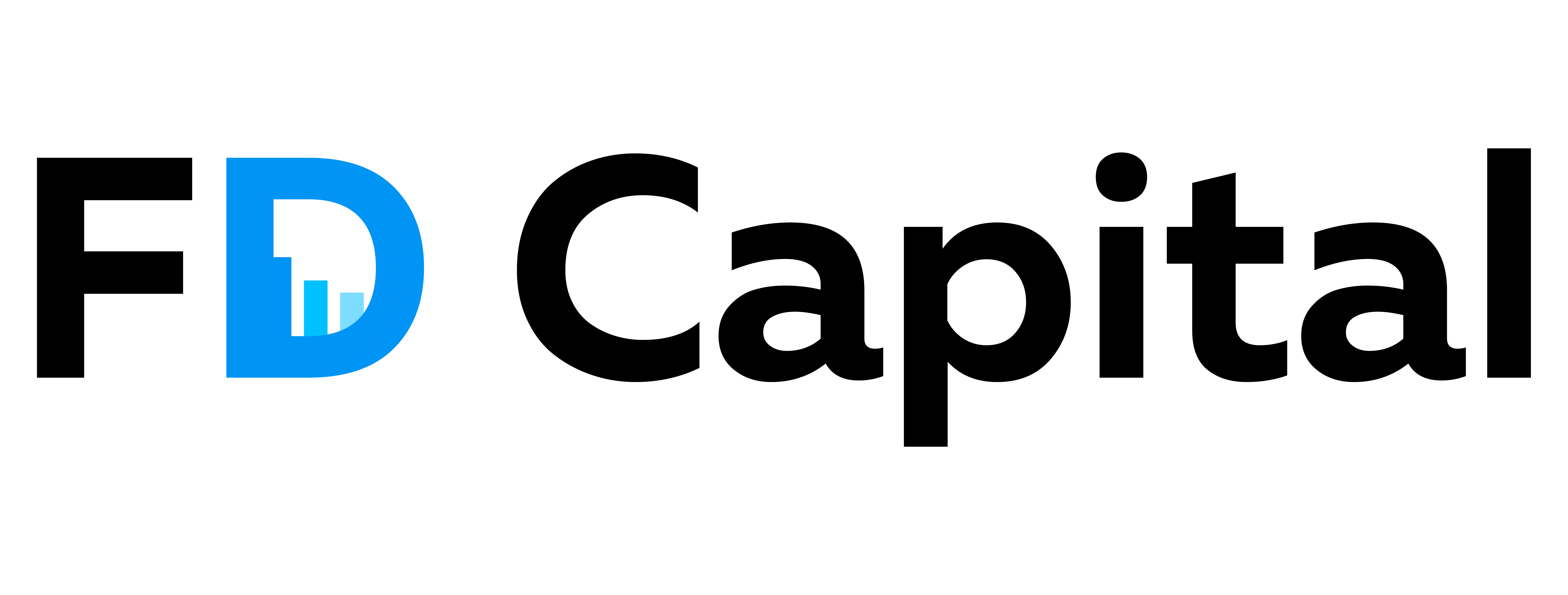Is Your Chart of Accounts a Liability? Common Pitfalls and How to Avoid Them

Is Your Chart of Accounts a Liability? Common Pitfalls and How to Avoid Them
Understanding the Chart of Accounts
Definition and Purpose
The Chart of Accounts (COA) is a systematic listing of all the financial accounts used by an organization. It serves as the backbone of the accounting system, providing a structured framework for organizing financial information. The primary purpose of the COA is to categorize all financial transactions, making it easier to track, report, and analyze financial data. This organization is crucial for preparing financial statements, budgeting, and ensuring compliance with accounting standards.
Structure and Components
The COA is typically organized into several categories, each representing a different type of account. These categories generally include:
Assets
Assets are resources owned by the organization that have economic value. They are typically divided into current assets, such as cash and accounts receivable, and non-current assets, like property and equipment.
Liabilities
Liabilities represent the organization’s obligations or debts. These are often categorized into current liabilities, such as accounts payable, and long-term liabilities, like loans and bonds payable.
Equity
Equity accounts reflect the owner’s interest in the organization. This includes common stock, retained earnings, and additional paid-in capital.
Revenues
Revenue accounts track the income generated from the organization’s primary business activities. This can include sales revenue, service income, and other sources of income.
Expenses
Expense accounts record the costs incurred in the process of generating revenue. These can be operating expenses, such as salaries and rent, or non-operating expenses, like interest and taxes.
Importance in Financial Management
The COA is a critical tool for financial management, as it provides a clear and organized view of the organization’s financial activities. It enables accurate financial reporting, which is essential for decision-making, strategic planning, and maintaining transparency with stakeholders. A well-structured COA helps in identifying trends, managing budgets, and ensuring that financial resources are allocated efficiently.
Customization and Flexibility
While the basic structure of a COA is similar across organizations, it can be customized to meet the specific needs of a business. This customization allows organizations to tailor their COA to reflect their unique operations, industry requirements, and reporting needs. Flexibility in the COA design ensures that it remains relevant and useful as the organization grows and evolves.
Common Challenges
Despite its importance, managing a COA can present several challenges. These include maintaining consistency, avoiding unnecessary complexity, and ensuring that the COA remains aligned with the organization’s financial goals. A poorly designed COA can lead to confusion, errors in financial reporting, and difficulties in financial analysis. Understanding these challenges is the first step in creating an effective and efficient COA.
The Role of a Chart of Accounts in Financial Management
Foundation for Financial Reporting
A well-structured Chart of Accounts (COA) serves as the backbone of an organization’s financial reporting system. It provides a systematic way to categorize all financial transactions, ensuring that financial statements are accurate and comprehensive. By organizing accounts into categories such as assets, liabilities, equity, revenues, and expenses, the COA enables businesses to generate financial reports that reflect their true financial position and performance. This structured approach facilitates the preparation of balance sheets, income statements, and cash flow statements, which are essential for stakeholders to make informed decisions.
Facilitating Budgeting and Forecasting
The COA plays a crucial role in budgeting and forecasting by providing a detailed framework for tracking financial performance against budgeted figures. By aligning the COA with the organization’s budgetary structure, financial managers can easily monitor variances and identify areas that require attention. This alignment allows for more accurate forecasting, as historical data can be analyzed to predict future financial trends. The COA thus becomes an essential tool for strategic planning, enabling organizations to allocate resources effectively and achieve their financial goals.
Enhancing Internal Controls
A well-designed COA enhances internal controls by providing a clear and consistent framework for recording financial transactions. This consistency reduces the risk of errors and fraud, as transactions are categorized and recorded in a standardized manner. The COA also facilitates the implementation of checks and balances, as it allows for the segregation of duties and the establishment of approval hierarchies. By ensuring that financial data is accurate and reliable, the COA supports the organization’s overall governance and compliance efforts.
Supporting Regulatory Compliance
Organizations are often required to comply with various regulatory standards and reporting requirements. A comprehensive COA ensures that financial data is recorded and reported in accordance with these standards, reducing the risk of non-compliance and potential penalties. The COA can be tailored to meet specific regulatory requirements, such as Generally Accepted Accounting Principles (GAAP) or International Financial Reporting Standards (IFRS), ensuring that financial statements are prepared in a manner that meets legal and regulatory obligations.
Enabling Detailed Financial Analysis
The COA provides the granularity needed for detailed financial analysis, allowing organizations to drill down into specific areas of their financial performance. By categorizing transactions into detailed accounts, financial managers can analyze trends, identify cost drivers, and assess the profitability of different business segments. This level of detail supports decision-making processes, as it provides insights into the financial health of the organization and highlights opportunities for improvement. The COA thus serves as a critical tool for financial analysis and strategic decision-making.
Common Pitfalls in Chart of Accounts Design
Overcomplication
Excessive Detail
A common mistake in chart of accounts (COA) design is including too much detail. While it’s important to capture necessary financial information, an overly detailed COA can lead to confusion and inefficiency. Each account should serve a clear purpose, and unnecessary granularity can make financial reporting cumbersome and difficult to manage.
Redundancy
Redundancy occurs when multiple accounts serve the same purpose or capture the same type of transaction. This can lead to duplication of data and make it challenging to maintain accurate financial records. Streamlining accounts to eliminate redundancy is crucial for clarity and efficiency.
Lack of Standardization
Inconsistent Naming Conventions
Inconsistent naming conventions can create confusion and make it difficult for users to understand the purpose of each account. A standardized naming system helps ensure that everyone in the organization can easily identify and use accounts correctly, facilitating better communication and reporting.
Varied Account Structures
When different departments or subsidiaries use varied account structures, it can complicate consolidation and comparison of financial data. A lack of uniformity can hinder the ability to generate comprehensive financial reports and analyze performance across the organization.
Inflexibility
Rigidity in Account Structure
A rigid COA that cannot adapt to changes in the business environment or organizational structure can become a liability. Businesses need the flexibility to add, remove, or modify accounts as needed to reflect changes in operations, regulations, or strategic direction.
Failure to Accommodate Growth
As businesses grow, their financial reporting needs become more complex. A COA that does not scale with the organization can impede growth by making it difficult to track new revenue streams, expenses, or business units. Designing a COA with future growth in mind is essential for long-term success.
Misalignment with Business Needs
Disconnect from Business Strategy
A COA that does not align with the organization’s strategic goals can lead to misinformed decision-making. The COA should be designed to provide insights that support strategic objectives, enabling management to make informed decisions based on accurate financial data.
Ignoring Stakeholder Input
Failing to consider the needs and input of key stakeholders, such as department heads or financial analysts, can result in a COA that does not meet the organization’s reporting requirements. Engaging stakeholders in the design process ensures that the COA supports the needs of all users.
Poor Maintenance
Neglecting Regular Updates
A COA that is not regularly reviewed and updated can become outdated, leading to inaccurate financial reporting. Regular maintenance is necessary to ensure that the COA remains relevant and reflects the current state of the business.
Lack of Documentation
Without proper documentation, it can be difficult for users to understand the purpose and use of each account. Comprehensive documentation is essential for training new employees, ensuring consistency in account usage, and maintaining the integrity of financial data.
Identifying Red Flags: When Your Chart of Accounts Becomes a Liability
Overly Complex Structure
A chart of accounts (COA) that is overly complex can become a significant liability for any organization. When the COA contains too many accounts, it can lead to confusion and inefficiencies. This complexity often results in errors during data entry, misclassification of transactions, and difficulty in generating accurate financial reports. An overly complex COA can also hinder the ability to quickly understand financial data, making it challenging for management to make informed decisions.
Lack of Standardization
A lack of standardization in the chart of accounts can create inconsistencies in financial reporting. When different departments or subsidiaries use varying account structures, it becomes difficult to consolidate financial data accurately. This inconsistency can lead to errors in financial statements and complicate the audit process. Standardization is crucial for ensuring that financial data is comparable across different parts of the organization and over time.
Inadequate Account Descriptions
Inadequate or unclear account descriptions can lead to misinterpretation and misclassification of financial transactions. When account names and descriptions are not descriptive enough, employees may struggle to determine the appropriate accounts for recording transactions. This can result in inaccurate financial data and complicate the reconciliation process. Clear and detailed account descriptions are essential for ensuring that all users of the COA understand its structure and purpose.
Frequent Changes and Revisions
Frequent changes and revisions to the chart of accounts can disrupt financial reporting and analysis. Constantly altering the COA can lead to confusion among employees and make it difficult to track financial performance over time. Frequent changes may also indicate underlying issues with the initial design of the COA, such as a lack of alignment with the organization’s business model or reporting needs. Stability in the COA is important for maintaining consistency and reliability in financial data.
Misalignment with Business Needs
A chart of accounts that is not aligned with the organization’s business needs can become a liability. If the COA does not reflect the company’s operational structure or reporting requirements, it can hinder effective financial management. Misalignment may result in the inability to track key performance indicators, assess profitability, or comply with regulatory requirements. Ensuring that the COA is tailored to the organization’s specific needs is crucial for supporting strategic decision-making.
Inflexibility to Adapt to Growth
An inflexible chart of accounts can become a liability as the organization grows and evolves. If the COA is not designed to accommodate changes in the business environment, such as new product lines, acquisitions, or market expansions, it can limit the organization’s ability to adapt. An inflexible COA may require significant restructuring to support growth, leading to disruptions in financial reporting and increased administrative burden. A well-designed COA should be scalable and adaptable to future changes in the business.
Best Practices for Designing an Effective Chart of Accounts
Understand the Business Needs
Align with Business Objectives
Design the chart of accounts (COA) to reflect the strategic goals and operational needs of the business. This alignment ensures that financial reporting supports decision-making processes and provides insights into performance metrics that matter most to the organization.
Consider Industry Standards
Incorporate industry-specific requirements and standards into the COA design. This approach helps in benchmarking against peers and ensures compliance with industry regulations and best practices.
Structure for Flexibility and Scalability
Use a Logical Numbering System
Implement a logical and consistent numbering system that allows for easy identification and categorization of accounts. This system should be intuitive and facilitate the addition of new accounts as the business grows or changes.
Plan for Future Growth
Design the COA with scalability in mind, allowing for expansion into new markets, product lines, or business units. This foresight prevents the need for frequent overhauls and ensures the COA remains relevant over time.
Ensure Consistency and Clarity
Standardize Account Descriptions
Use clear and standardized descriptions for each account to avoid confusion and ensure consistency across the organization. This practice aids in accurate data entry and reporting.
Maintain Uniformity Across Departments
Ensure that all departments use the same COA structure to promote consistency in financial reporting and analysis. This uniformity simplifies consolidation and comparison of financial data across the organization.
Facilitate Accurate Reporting
Enable Detailed Reporting
Design the COA to allow for detailed reporting and analysis by including sufficient granularity in account categories. This detail supports in-depth financial analysis and aids in identifying trends and anomalies.
Support Regulatory Compliance
Ensure the COA structure supports compliance with relevant accounting standards and regulatory requirements. This support minimizes the risk of non-compliance and potential penalties.
Regularly Review and Update
Conduct Periodic Reviews
Regularly review the COA to ensure it remains aligned with the business’s evolving needs and objectives. This review process helps identify outdated or redundant accounts that may need to be consolidated or removed.
Incorporate Feedback from Stakeholders
Engage with key stakeholders, including finance, operations, and management, to gather feedback on the COA’s effectiveness. This collaboration ensures the COA continues to meet the needs of all users and supports efficient financial management.
Tools and Technologies to Streamline Your Chart of Accounts
Accounting Software Solutions
Modern accounting software solutions are essential tools for streamlining your chart of accounts. These platforms offer features that automate and simplify the management of financial data. Popular accounting software like QuickBooks, Xero, and Sage Intacct provide customizable chart of accounts templates, allowing businesses to tailor their financial reporting structure to their specific needs. These solutions often include automated data entry, real-time financial reporting, and integration with other business systems, reducing manual errors and improving efficiency.
Enterprise Resource Planning (ERP) Systems
ERP systems integrate various business processes, including accounting, into a single unified system. This integration ensures that financial data is consistent and accessible across departments. ERP systems like SAP, Oracle, and Microsoft Dynamics offer robust chart of accounts management features, enabling businesses to maintain a streamlined and organized financial structure. These systems support multi-currency transactions, complex organizational hierarchies, and compliance with international accounting standards, making them ideal for larger organizations with diverse operations.
Cloud-Based Platforms
Cloud-based platforms provide flexibility and accessibility, allowing businesses to manage their chart of accounts from anywhere with an internet connection. These platforms offer real-time collaboration, enabling multiple users to access and update financial data simultaneously. Cloud-based solutions also provide automatic updates and backups, ensuring that businesses always have access to the latest features and data security measures. Platforms like NetSuite and FreshBooks are popular choices for businesses looking to leverage the benefits of cloud technology.
Automation and Artificial Intelligence
Automation and AI technologies are transforming the way businesses manage their chart of accounts. These technologies can automate repetitive tasks such as data entry, reconciliation, and reporting, freeing up valuable time for finance teams to focus on strategic activities. AI-powered tools can analyze financial data to identify patterns and anomalies, providing insights that help businesses optimize their chart of accounts structure. Tools like BlackLine and FloQast offer automation solutions specifically designed for financial close and account reconciliation processes.
Data Analytics and Business Intelligence Tools
Data analytics and business intelligence (BI) tools provide deeper insights into financial data, helping businesses make informed decisions about their chart of accounts. These tools can analyze large volumes of data to identify trends, forecast future performance, and assess the impact of different financial scenarios. BI tools like Tableau, Power BI, and Looker offer advanced visualization capabilities, enabling businesses to create interactive dashboards and reports that highlight key financial metrics and performance indicators.
Integration Capabilities
Integration capabilities are crucial for ensuring that your chart of accounts is seamlessly connected with other business systems. Tools that offer robust integration options can connect your accounting software with CRM, HR, and inventory management systems, ensuring that financial data is consistent and up-to-date across all platforms. Integration platforms like Zapier and MuleSoft facilitate the connection between different software applications, allowing businesses to automate workflows and streamline their financial processes.
Customization and Scalability
Customization and scalability are important considerations when selecting tools and technologies for managing your chart of accounts. Businesses should look for solutions that offer customizable chart of accounts structures, allowing them to adapt to changing business needs and regulatory requirements. Scalable solutions can grow with your business, accommodating increased transaction volumes and more complex financial reporting requirements. Customization options also enable businesses to tailor their financial reporting to specific industry standards and organizational goals.
Case Studies: Lessons Learned from Real-World Examples
Overcomplicated Chart of Accounts: A Manufacturing Firm’s Struggle
A mid-sized manufacturing company found itself in financial disarray due to an overly complex chart of accounts. With hundreds of accounts, many of which were redundant or rarely used, the finance team struggled to generate meaningful reports. This complexity led to errors in financial statements and delayed decision-making.
Lessons Learned
- Simplification is Key: The company learned the importance of streamlining their chart of accounts. By consolidating similar accounts and eliminating unnecessary ones, they improved accuracy and efficiency.
- Regular Reviews: Implementing regular reviews of the chart of accounts helped ensure it remained relevant and aligned with the company’s evolving needs.
Lack of Standardization: A Retail Chain’s Inconsistency
A national retail chain faced challenges due to a lack of standardization across its various locations. Each store had developed its own chart of accounts, leading to inconsistencies in financial reporting and difficulties in consolidating data at the corporate level.
Lessons Learned
- Centralized Control: Establishing a centralized chart of accounts allowed for consistent financial reporting across all locations.
- Training and Communication: Providing training and clear communication to store managers ensured adherence to the standardized chart of accounts.
Inflexible Structure: A Tech Startup’s Growing Pains
A rapidly growing tech startup initially set up a rigid chart of accounts that could not accommodate its expanding operations. As the company diversified its product lines and entered new markets, the inflexible structure hindered its ability to track performance accurately.
Lessons Learned
- Scalability and Flexibility: Designing a chart of accounts with scalability in mind allowed the startup to adapt to growth and change without overhauling its financial systems.
- Proactive Planning: Anticipating future needs and incorporating flexibility into the chart of accounts helped the company manage its growth more effectively.
Misalignment with Business Strategy: A Healthcare Provider’s Misstep
A healthcare provider experienced financial mismanagement due to a chart of accounts that was misaligned with its strategic goals. The accounts were organized in a way that did not reflect the provider’s focus on patient care and service quality.
Lessons Learned
- Alignment with Strategy: Ensuring the chart of accounts aligns with the organization’s strategic objectives enabled better tracking of key performance indicators.
- Stakeholder Involvement: Involving key stakeholders in the design of the chart of accounts ensured it supported the organization’s mission and goals.
Inadequate Detail: A Nonprofit’s Reporting Challenges
A nonprofit organization struggled with inadequate detail in its chart of accounts, which made it difficult to track funding sources and expenditures accurately. This lack of detail led to challenges in meeting reporting requirements for grants and donations.
Lessons Learned
- Granularity and Detail: Incorporating sufficient granularity in the chart of accounts allowed the nonprofit to track financial data at the necessary level of detail.
- Compliance and Reporting: Ensuring the chart of accounts met external reporting requirements helped the organization maintain transparency and accountability.
Conclusion: Ensuring Your Chart of Accounts is an Asset, Not a Liability
Regular Review and Updates
A well-maintained chart of accounts (COA) requires regular review and updates to remain relevant and effective. This involves periodically assessing the structure and content of your COA to ensure it aligns with your organization’s current financial reporting needs and business operations. Regular reviews help identify obsolete accounts, redundant categories, or areas where additional granularity is needed. By keeping your COA up-to-date, you can ensure it continues to provide accurate and meaningful financial insights.
Alignment with Business Goals
Your COA should be designed to support and reflect your organization’s strategic objectives. This means aligning your accounts with key business goals and performance metrics. By doing so, you can ensure that your financial reporting provides valuable insights into how well your organization is achieving its objectives. This alignment also facilitates better decision-making by providing stakeholders with the financial information they need to evaluate progress and make informed choices.
Training and Communication
Effective use of a COA requires that all relevant personnel understand its structure and purpose. Providing training and clear communication about how to use the COA can prevent errors and ensure consistency in financial reporting. Training should cover the rationale behind the COA’s design, how to categorize transactions correctly, and the importance of maintaining data integrity. Clear communication channels should be established to address any questions or issues that arise, fostering a culture of accuracy and accountability.
Leveraging Technology
Modern accounting software offers powerful tools for managing and optimizing your COA. Leveraging technology can streamline the process of updating and maintaining your COA, reducing the risk of errors and improving efficiency. Automated features can help with tasks such as account reconciliation, reporting, and data analysis. By utilizing these technological advancements, organizations can enhance the accuracy and reliability of their financial data, turning their COA into a strategic asset.
Customization and Flexibility
A one-size-fits-all approach to a COA is rarely effective. Customization and flexibility are key to ensuring your COA meets the unique needs of your organization. This involves tailoring the COA to reflect the specific nature of your business, industry requirements, and reporting standards. A flexible COA can adapt to changes in business operations, regulatory requirements, or strategic direction, ensuring it remains a valuable tool for financial management and decision-making.
Related posts:
Mastering Cashflow: 10 Essential Best Practices for Financial Stability
Digital Evolution: How to Drive Finance Transformation Success by Rethinking Ways of Working
Navigating Making Tax Digital for Income Tax Self Assessment: Essential Dates and Deadlines
The Key Differences Between Cash Flow vs. Profit: A Guide for Small Business Owners

Adrian Lawrence FCA with over 25 years of experience as a finance leader and a Chartered Accountant, BSc graduate from Queen Mary College, University of London.
I help my clients achieve their growth and success goals by delivering value and results in areas such as Financial Modelling, Finance Raising, M&A, Due Diligence, cash flow management, and reporting. I am passionate about supporting SMEs and entrepreneurs with reliable and professional Chief Financial Officer or Finance Director services.












